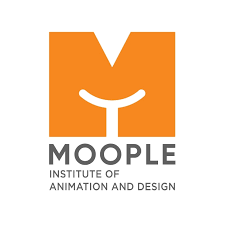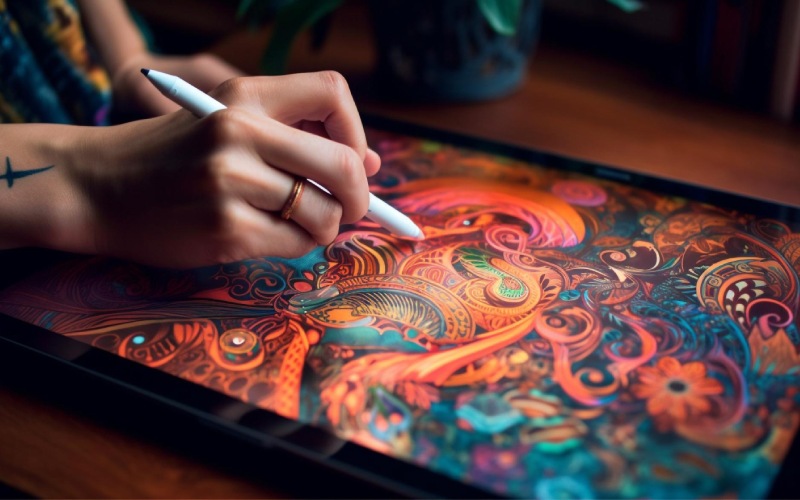Art directors play a critical part in shaping the visual media we interact with every day. An art director is a visual creative professional who provides leadership and oversight for the visual aspects of media systems. In addition, they assure consistency across all imagery, text, color, and layout to bring an overarching visual theme and style to life.
In fact, from print postings to TV commercials, art directors are responsible for the overall look and style of the visual media produced. However, pursuing a graphic design course and a career as an art director can additionally be an incredibly encouraging path.
The Art Director’s Role
Art directors are visual storytellers who lead crews of designers, illustrators, photographers, and other creativities to execute an overall vision for the look and sense of a design. In addition, their crucial responsibilities include:
- First, uniting with copywriters, clients, and platoon members to determine design objectives and demands
- Second, developing visual conceptions and styles for advertising juggernauts, publications, movies, or other media
- Third, creating sketches, visual references, storyboards, and layouts to communicate ideas
- Then, directing all visual aspects including art, photography, sources, color palettes, etc.
- Fifth, diverseeing graphic designers, illustrators, and photographers to ensure consistency
- Finally, reviewing and approving final designs, diagrams, and layouts before the release
The purpose also requires strong leadership, project management, communication, and presentation expertise in addition to creative vision and visual sensibility. Art directors work on projects across industries like advertising, publishing, entertainment, and also fashion.
Education and Skills for Art Directors
Becoming an art director additionally requires both education and experience. In fact, most pursue a bachelor’s degree in an area like graphics and animation courses, illustration, or a related field. Here are some key education and skills art directors need:
- Bachelor’s degree in design/visual arts – To develop technical skills in typography, layout, digital design, photography, and build a portfolio
- Creativity and visual storytelling – Ability to think conceptually and tell visual stories. Strong visualization and ideation are also essential.
- Leadership and collaboration – Managing creative teams and guiding unified vision execution
- Project management – Juggling multiple deadlines and projects simultaneously
- Communication and presentation – Conveying ideas clearly and also persuasively selling concepts
- Design software skills – Proficiency with programs like Adobe Creative Cloud
- Business and marketing understanding – Creating solutions tailored to brands and campaigns
Starting an Art Director Career
Additionally, here are some tips for breaking into the art director field:
Gain Relevant Experience
- Complete internships at Moople Institute of Animation and Design, design studios, or ad agencies while in school for exposure to art director responsibilities
- Take on freelance design gigs to gain real-world experience and build your portfolio
- Shadow established art directors to learn from their creative process and leadership style
Build a Standout Portfolio
- Showcase 8-12 diverse pieces displaying strong conceptual thinking and also visual execution
- In addition, seek feedback from professors, and art directors and incorporate suggestions
- Display both personal and collaborative work to highlight individual and teamwork abilities
- Furtherore, focus on quality over quantity with clear objectives and processes
Pursue a Postgraduate Degree
- Some art directors complete Master’s degrees like MFAs in Graphic Design Course or Visual Communication for deeper design knowledge and to boost job prospects
- Graduate programs provide more networking, mentorship, and portfolio development opportunities
Join Professional Organizations
- Groups like AIGA, Adobe Design Circle, and D&AD offer events, development programs, and recognitions valuable for career growth
- Take advantage of student memberships even before entering the field
- Follow art director online forums and social media for exposure to industry trends and best practices
Finding Work Opportunities
Common entry-level and early career pathways include:
Junior Designer – Gain experience on graphics and animation courses’ teams with visual concepts and layouts
Production Artist – Work with art directors taking designs through final production stages
Graphic Design Intern – Complete short internships across media/design companies to experience different roles
Freelance Designer – Seek out independent clients and projects to manage and showcase in your portfolio
Advertising/Marketing Assistant – At an ad agency, assist with campaigns while managing accounts and designers
2-5 years in roles like these provide the hands-on experience to take on more responsibility. In addition, talented designers then progress towards Associate Art Director and eventually Art Director positions leading major projects.
Evolving Your Career Over Time
- Take continuing education classes on the latest design software, typography, layout principles, and skills
- Furthermore, seek responsibilities like managing larger teams, mentoring junior designers, overseeing big-budget campaigns
- Shift focus from print design to digital mediums: website, social media, video, branded content
- In addition, move into related roles like Creative Director, Brand Manager, or Design executive focusing more on strategy
- Consider teaching graphic design courses at colleges or launching a private design consultancy
Turn Your Visual Passion into a Career
Becoming an art director allows visual creatives to turn their artistic passion into a rewarding, lifelong career. Additionally, with the right education, skills, and experience, art directors also play an integral role in shaping impactful media, brands, and campaigns. If you’re ready to lead teams in bringing creative ideas to life visually, an art director career may be the perfect path.
In summary, art directors have the chance to tell visual stories and shape the media, advertisements, and content that inform and entertain the world every day. In fact, for those with a keen visual sense and passion for the creative arts, pursuing an education, gaining hands-on experience, and continuously building your skills can set you on the path to an exciting career as an art director.

